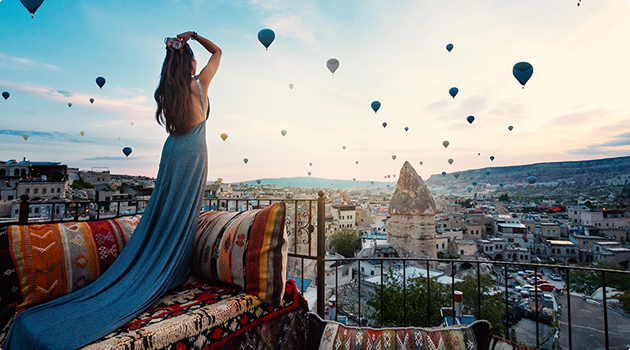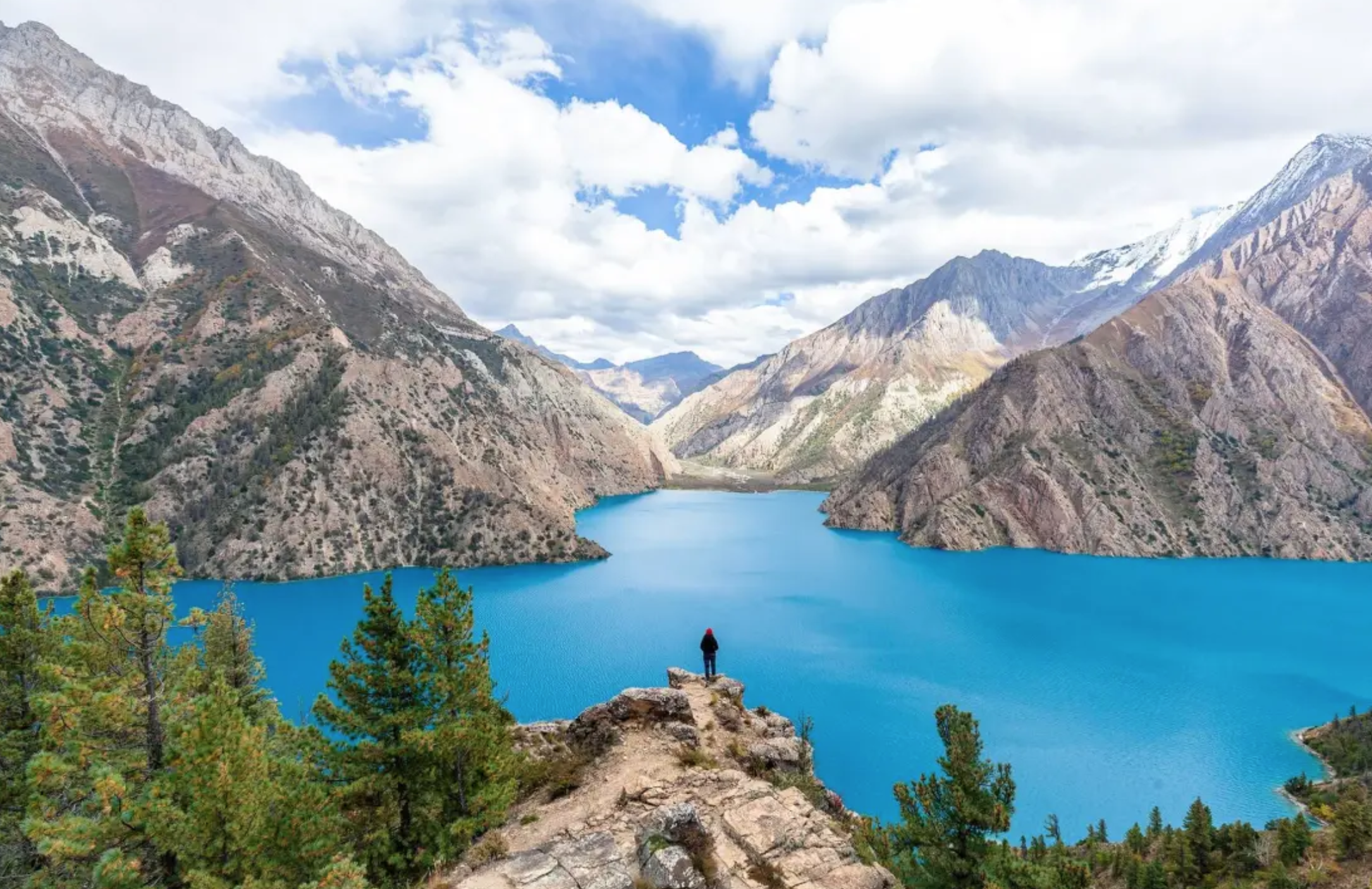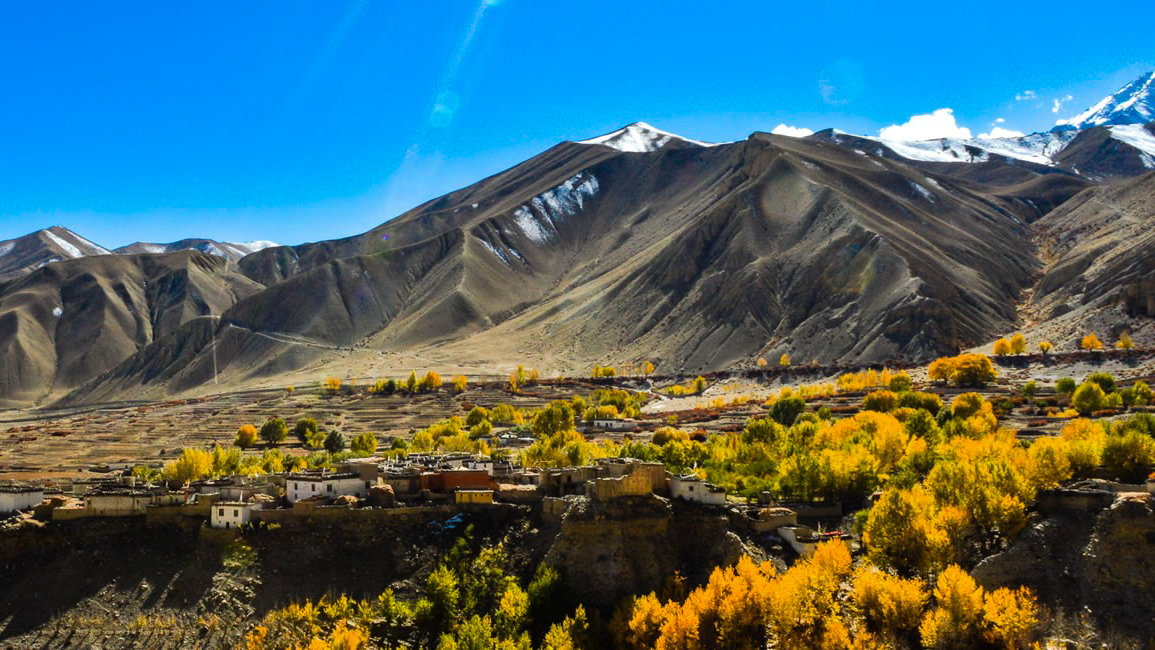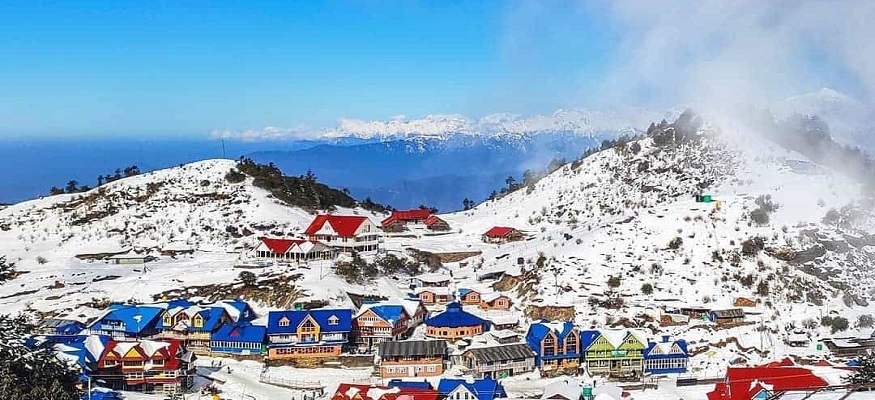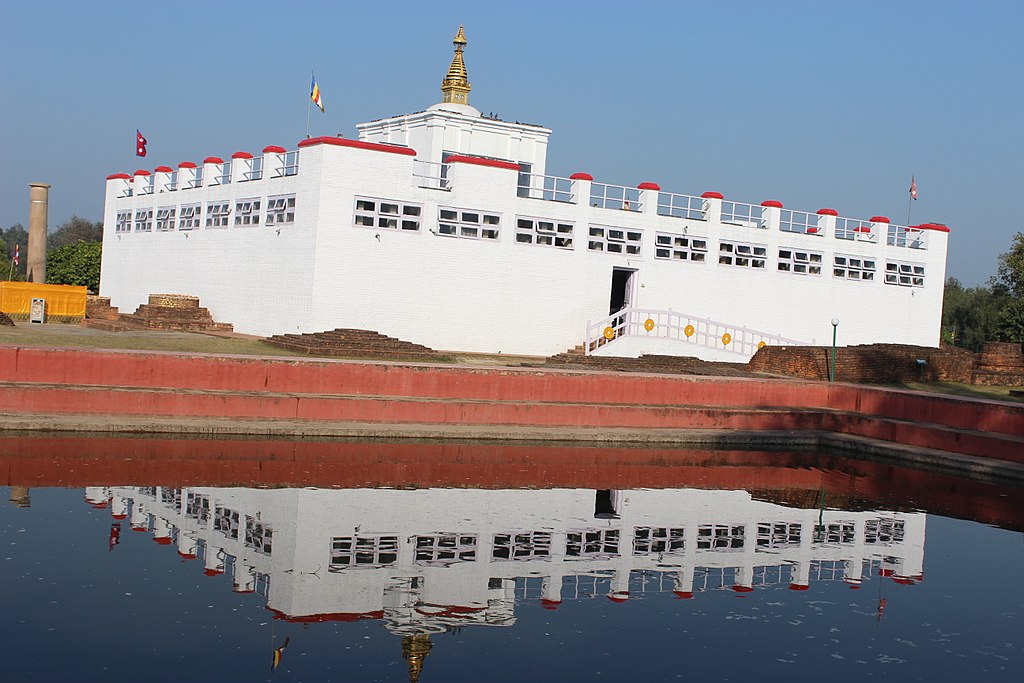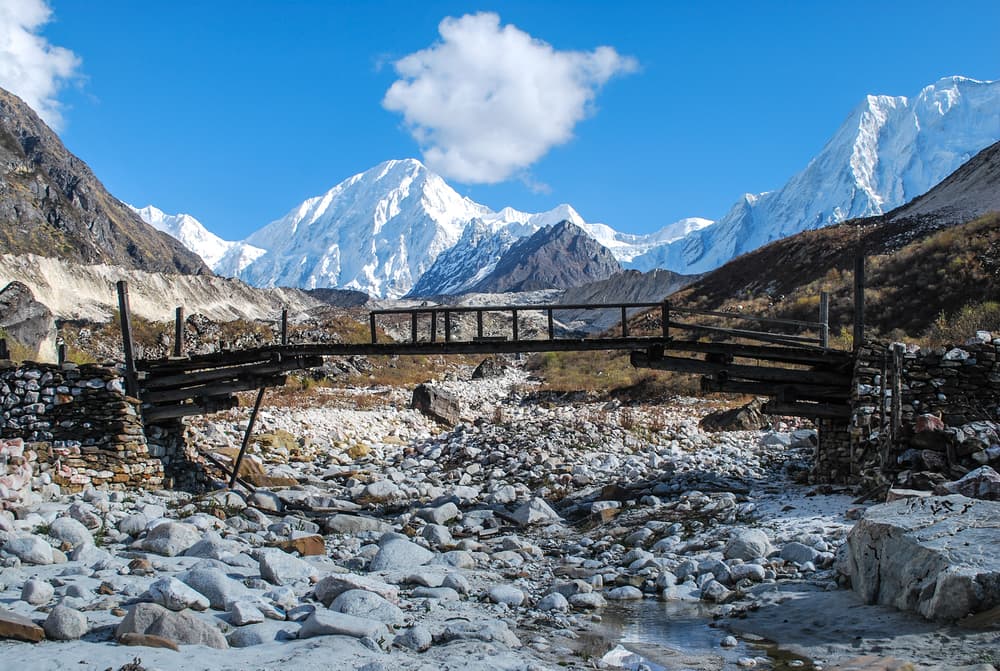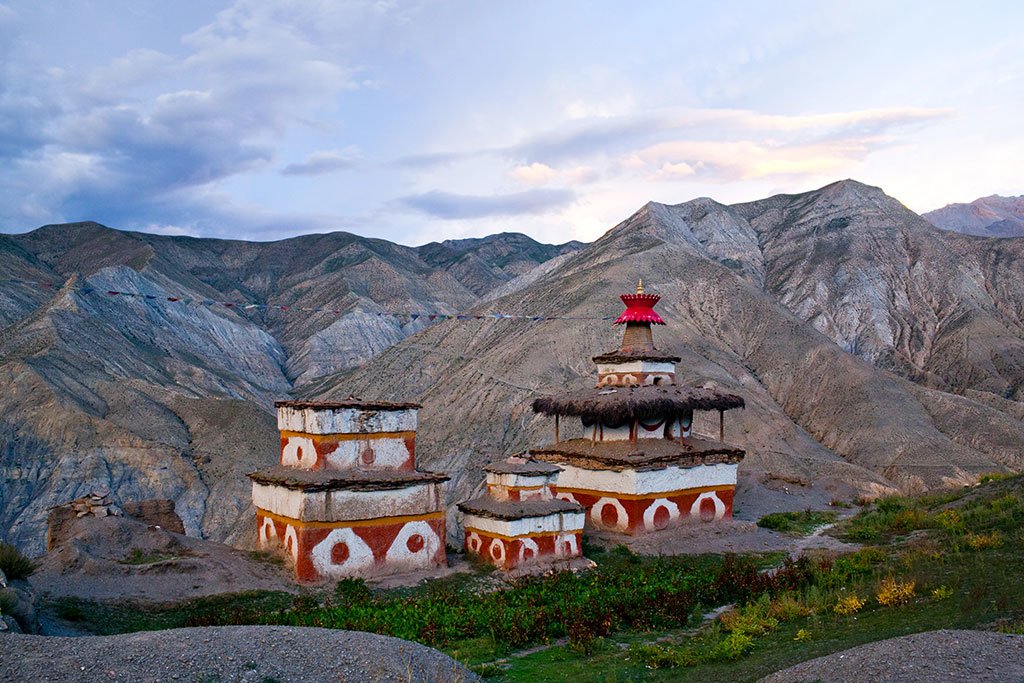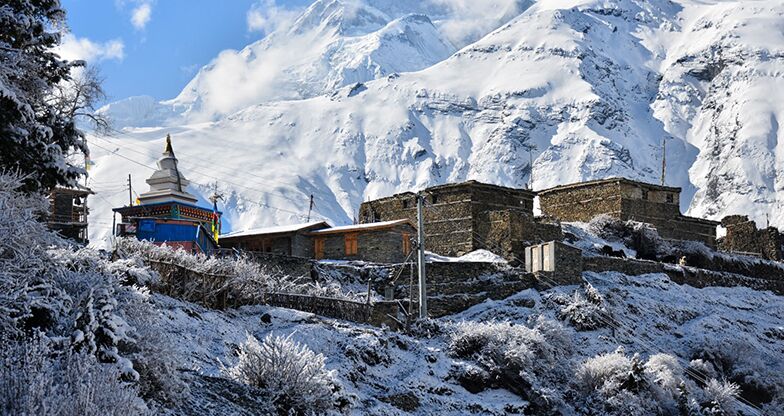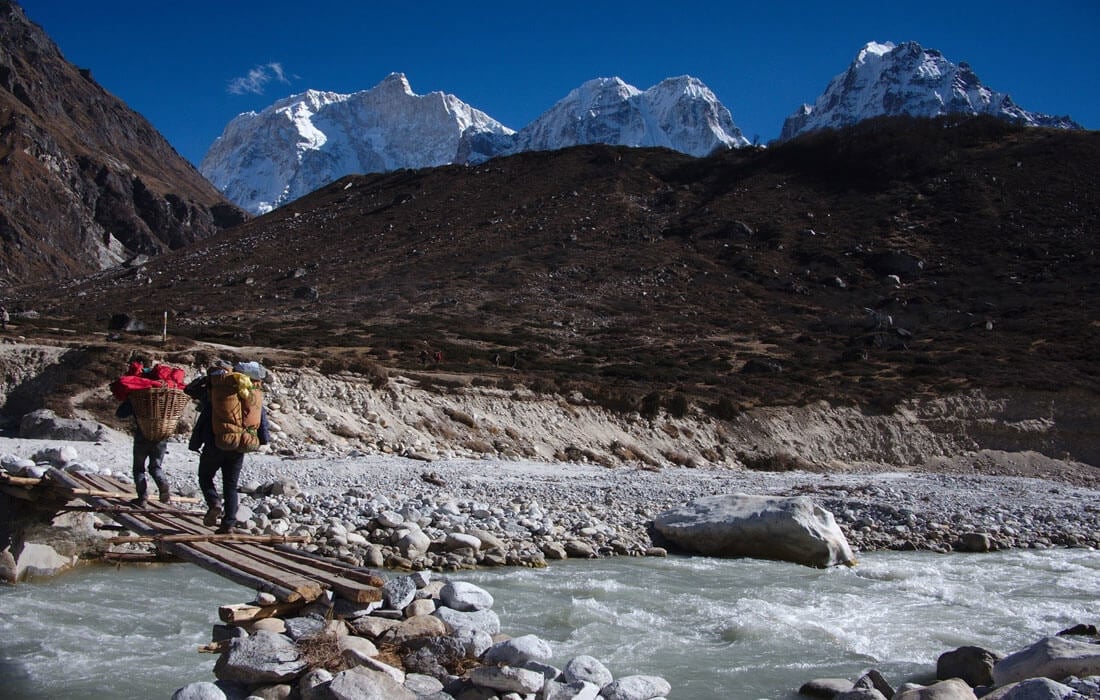Day 1
Arrival in Kathmandu (1,400m)
Your Tsum Valley adventure begins with arrival in Nepal's vibrant capital. After airport pickup, settle into your hotel and attend a pre-trek briefing with your guide. Use your free time to explore the historic sites of Kathmandu, gather any last-minute trekking supplies from Thamel, and sample authentic Nepali cuisine while preparing mentally for the adventure ahead.
Accommodation: Comfortable hotel in Kathmandu with modern amenities.
Day 2
Kathmandu to Soti Khola (710m)
Begin your journey with an early morning drive from Kathmandu to Soti Khola, a 7-8 hour journey along the Prithvi Highway following the Trishuli and Marshyangdi rivers. The drive offers picturesque views of terraced farmlands, rushing rivers, and glimpses of the Annapurna and Manaslu ranges in the distance. The road becomes increasingly scenic but rough as you approach Arughat and continue to Soti Khola, your starting point for the trek.
Accommodation: Basic teahouse in Soti Khola.
Day 3
Soti Khola to Machha Khola (900m)
Your first day of trekking covers 14km in approximately 6-7 hours as you follow the Budhi Gandaki River. The trail alternates between forested paths and rocky sections alongside the river, with several ascents and descents. Pass through small villages and terraced fields, crossing suspension bridges that offer thrilling views of the river below. The day concludes in the riverside settlement of Machha Khola, named for its fishing tradition.
Accommodation: Teahouse in Machha Khola.
Day 4
Machha Khola to Jagat (1,340m)
Today's 6-7 hour journey continues following the Budhi Gandaki River through increasingly dramatic gorges. The trail passes hot springs at Tatopani, where you can soothe tired muscles with a therapeutic dip. After crossing a suspension bridge, the path climbs steeply up stone stairs before descending to the beautiful village of Jagat, an official entry point to the Manaslu Conservation Area where your permits will be checked.
Accommodation: Teahouse in Jagat.
Day 5
Jagat to Lokpa (2,240m)
After trekking through bamboo forests and crossing the Budhi Gandaki several times, you'll reach Ekle Bhatti where the trail splits – one path continuing toward the Manaslu Circuit and the other branching east toward the Tsum Valley. Follow the path to Lokpa, climbing steeply through magnificent pine and rhododendron forests with occasional glimpses of Shringi Himal. This 6-7 hour day represents your first foray into the Tsum Valley region, marked by a dramatic change in landscape and decreasing signs of modern influence.
Accommodation: Basic teahouse in Lokpa.
Day 6
Lokpa to Chumling (2,386m)
This 5-6 hour trek begins with a descent into a deep gorge followed by a steep climb through pine and rhododendron forests. Cross the Siyar Khola (river) and continue upward to reach Lower Tsum Valley and the village of Chumling. Here, you'll enjoy your first authentic encounter with Tsumba culture, visiting the old Chumling Gompa and stone houses with distinctive architectural features. On clear days, views of Ganesh Himal provide spectacular photo opportunities.
Accommodation: Teahouse in Chumling.
Day 7
Chumling to Chhokang Paro (3,031m)
Today's 5-6 hour journey takes you deeper into the Upper Tsum Valley. After crossing a suspension bridge, the trail climbs gradually through pine and rhododendron forests, passing traditional Tibetan-style villages. Visit the Gho Valley on the way, home to two interesting monasteries – Panago Gumba and Lung Dang Gumba. Continue to Chhokang Paro, the main village of the upper Tsum Valley, consisting of two settlements (Chhokang and Paro) with superb views of the surrounding Himalayas.
Accommodation: Teahouse in Chhokang Paro.
Day 8
Chhokang Paro to Nile/Chhule (3,361m)
The 5-6 hour trek today follows gentle terrain through traditional Tibetan-style villages with extensive farming terraces. Pass through Lamagaon, visiting Rachen Gompa, a nunnery home to over 80 nuns belonging to the Ngak-pa sect. The monastery, established in 1905, houses exquisite Buddhist statues, paintings, and a collection of philosophical texts. Continue to Milarepa's Cave, named after the famous Tibetan saint who meditated here, before reaching the twin villages of Nile and Chhule, situated in a broad valley beneath soaring peaks.
Accommodation: Teahouse in Nile/Chhule.
Day 9
Day Trip to Mu Gompa (3,700m) and Dhephyudonma Gompa
Embark on a day trip to Mu Gompa, one of the oldest monasteries in the region, dating back to 1895. The 4-5 hour round-trip trek climbs through yak pastures with breathtaking mountain vistas. Explore the monastery complex, interacting with resident monks and learning about their daily routines and spiritual practices. If energy permits, continue to Dhephyudonma Gompa, considered to be the oldest monastery in the Tsum Valley and according to legend established by the first Buddha, Kanjin Choedar. Return to Nile/Chhule for the night.
Accommodation: Same teahouse in Nile/Chhule.
Day 10
Nile/Chhule to Burji (3,280m)
Instead of retracing your steps, today you begin a circular return route via the western valley. The 5-6 hour trek follows the high trail to Burji, a small settlement with spectacular views of Ganesh Himal, Himalchuli, and the Baudha Himal ranges. Along the way, pass through high pastures used by yak herders during summer months and several unique meditation caves used by Buddhist practitioners for centuries. The trail offers continuous panoramic views and a sense of remote wilderness.
Accommodation: Basic teahouse in Burji.
Day 11
Burji to Chumling (2,386m)
This 6-7 hour trek descends through changing vegetation zones, offering different perspectives of the valley and mountains than your ascent route provided. Pass through small, seldom-visited settlements and agricultural terraces where traditional farming methods have remained unchanged for centuries. The trail eventually rejoins the main Tsum Valley path at Chumling, completing your circuit of the upper valley.
Accommodation: Teahouse in Chumling.
Day 12
Chumling to Philim (1,570m)
Begin your exit from the Tsum Valley, trekking 6-7 hours back to Lokpa and then continuing to the charming village of Philim. This larger settlement on the main Manaslu Circuit trail features a Tibetan-style Buddhist monastery and a Japanese-funded school. The village offers comfortable accommodation and a chance to readjust to more populated areas after the remote tranquility of Tsum Valley.
Accommodation: Teahouse in Philim.
Day 13
Philim to Khorlabesi (970m)
Continue your descent through the Budhi Gandaki Valley for 7-8 hours, passing through Sirdibas and Jagat before reaching Khorlabesi. The scenery transitions back to more subtropical vegetation with banana plants, terraced rice fields, and increasingly Hindu cultural influences. This long day of trekking covers a significant distance but is primarily downhill, allowing you to reflect on your experiences as you return to lower elevations.
Accommodation: Teahouse in Khorlabesi.
Day 14
Khorlabesi to Soti Khola (710m)
Your final day of trekking is a relatively easy 5-6 hour journey back to Soti Khola, completing your circuit. The trail follows the river through small farming communities and lush forests, with time to appreciate the warmer climate and lusher vegetation of the lower regions. Celebrate your trek completion with your guides and porters upon reaching Soti Khola.
Accommodation: Teahouse in Soti Khola.
Day 15
Soti Khola to Kathmandu
Board your return vehicle for the 7-8 hour drive back to Kathmandu. The journey provides time for reflection on your experiences in one of Nepal's most pristine cultural territories. Upon arrival in Kathmandu, enjoy the comforts of your hotel, perhaps treating yourself to a celebratory dinner in one of the city's many excellent restaurants.
Accommodation: Hotel in Kathmandu.
Day 16
Departure from Kathmandu
Your Tsum Valley adventure concludes with a transfer to Kathmandu International Airport for your departure flight. Depending on your schedule, you may have time for some last-minute shopping or sightseeing in Kathmandu before departing from Nepal with extraordinary memories and cultural insights from this unique Himalayan valley.

 Itinerary
Itinerary
 Services
Services
 Good To Know
Good To Know
 Reviews
Reviews
 FAQs (Frequently Asked Questions)
FAQs (Frequently Asked Questions)
